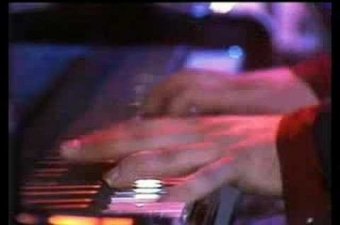Poodle’s Patio
640 BourbonNew Orleans LA 70130
Poodle’s Patio—also called Poodle Patio—opened in 1957 with a pink interior and a plush-lined bar. The club was named for the pets of burlesque dancer Suzanne Robbins, which she dyed loud colors and tossed about with her feet onstage (at the time, she was billed as “Jezebel, the girl with 1,000 movements.”)
The musician most closely associated with Poodle’s Patio was Leon Gross, better known as Archibald. His hard-pounding barrelhouse piano style, forged in honky tonks and brothels before the war, presaged the emergence of Fats Domino. In 1950, his version of “Stack-A-Lee” on Imperial Records became the first recording of the folk song to climb the Billboard charts. Poor health limited Archibald’s ability to capitalize on the hit, but he held a residency here for years.
In the early 1960s, a young bandleader named Mac Rebennack played behind Robbins into the wee hours. During the day he worked at Cosimo Matassa’s nearby recording studio, writing songs, playing sessions, producing, and serving as an A&R man. Later in the decade he developed the persona of Dr. John, based on an old New Orleans spiritual leader, for the singer Ronnie Barron. Barron declined it, and Harold Battiste encouraged Rebannack to step into the role himself. He decided to “wing it,” setting him on a path to the Rock and Roll Hall of Fame.
Rebennack got the gig at Poodle’s Patio through his running partner James Booker. Booker was a genius at the keyboard, veering from Chopin to Ray Charles, often to the astonishment of his fellow musicians. Like other Black musicians in the R&B era, he worked Bourbon Street between recording sessions and stints on the Chitlin Circuit.
At Werlein’s music store, Booker taught Rebennack to play the organ so their bands could rotate from Poodle’s Patio to other clubs on Bourbon Street. Rebbenack, whose group was white, and Booker, whose group was Black, swapped backing musicians one at a time over the course of a night to flout segregation laws. They played till the sun came up, using strategically timed solos to step away and feed their drug habits.
In 1962, Poodle’s Patio became the first Bourbon Street nightclub to be padlocked in District Attorney Jim Garrison’s notorious vice raids. In The Last Madam: A Life in the New Orleans Underworld, Christine Wiltz reports that Garrison targeted the club in retaliation for Robbins having rebuffed his advances. The dancer was taken off stage in handcuffs, in front of a full house, for indecency.
In Los Angeles in 1972, Dr. John played some old tunes for producer Jerry Wexler, including one of Archibald’s from his Bourbon Street days. Wexler bit, leading to Dr. John’s acclaimed album Gumbo, an homage to classic New Orleans R&B.
About Bourbon Street
Bourbon Street, one of the most famous streets in the country, is only 14 blocks long, running through the middle of the French Quarter. It took off as an entertainment district in the 1940s, when wartime activity brought waves of visitors to New Orleans. Bands often performed in floor shows featuring burlesque dancers (who stripped to varying degrees), comedians, and other entertainers.
This freewheeling era came to a close, in the eyes of many patrons, with District Attorney Jim Garrison’s vice raids in the early 1960s. Crime — organized and not — was pervasive on Bourbon Street, and Garrison’s crusade scored some political points. The resulting loss of revenue at the clubs, meanwhile, scaled back entertainment budgets.
The only Black people on Bourbon Street at the time were there to work (musicians were generally considered hired help; some had to wait in storerooms between sets). Even after the passage of civil rights legislation some clubs resisted integration, and audiences on Bourbon Street remained largely white for years afterward.
In recent decades, as the city relied increasingly on tourism to prop up its economy, the market dictated more changes: Modern stripping supplanted burlesque and DJ booths replaced bandstands. The street became a pedestrian mall, filled with go-cups and Mardi Gras beads year-round. Several clubs sticking with live music offered low wages for bands to play songs familiar to visitors.
Hand-wringing about the quality and nature of live music on the strip has been more or less constant since the 1950s, and not without reason. Still, some venues persisted in hiring reputable artists. In the 2000s, the To Be Continued Brass Band took matters into their own hands, breaking into the scene by playing on the corner of Bourbon and Canal Street every night.
In any case millions of visitors to the strip each year find the spectacle they’re looking for, exotic but approachable, with a more permissive atmosphere than they feel at home. Its economic impact on the city is in the billions. If it’s crass it’s also egalitarian: Bourbon Street today is among the more integrated spaces in town.
Videos

From 1986 in Montreux, Dr. John performs "Junco Partner."

From Lily Keber's 2013 documentary "Bayou Maharajah," Dr. John discusses the enigmatic James Booker, who taught him to play the organ.
Video posted by Bayou Maharajah.
From Lily Keber's 2013 documentary "Bayou Maharajah," Dr. John discusses the enigmatic James Booker, who taught him to play the organ.

From 1983, the year of his untimely death, piano wizard James Booker plays at the Maple Leaf Bar, where he had a regular gig.
Video posted by Ali Ben Saad.
From 1983, the year of his untimely death, piano wizard James Booker plays at the Maple Leaf Bar, where he had a regular gig.

From the 2017 Ponderosa Stomp Music History Conference, Meters bassist George Porter, Jr. and drummer "Wacko" Wade Wright discuss gigging on Bourbon Street in the 1960s.
Video posted by The Ponderosa Stomp Foundation.
From the 2017 Ponderosa Stomp Music History Conference, Meters bassist George Porter, Jr. and drummer "Wacko" Wade Wright discuss gigging on Bourbon Street in the 1960s.
Images

















